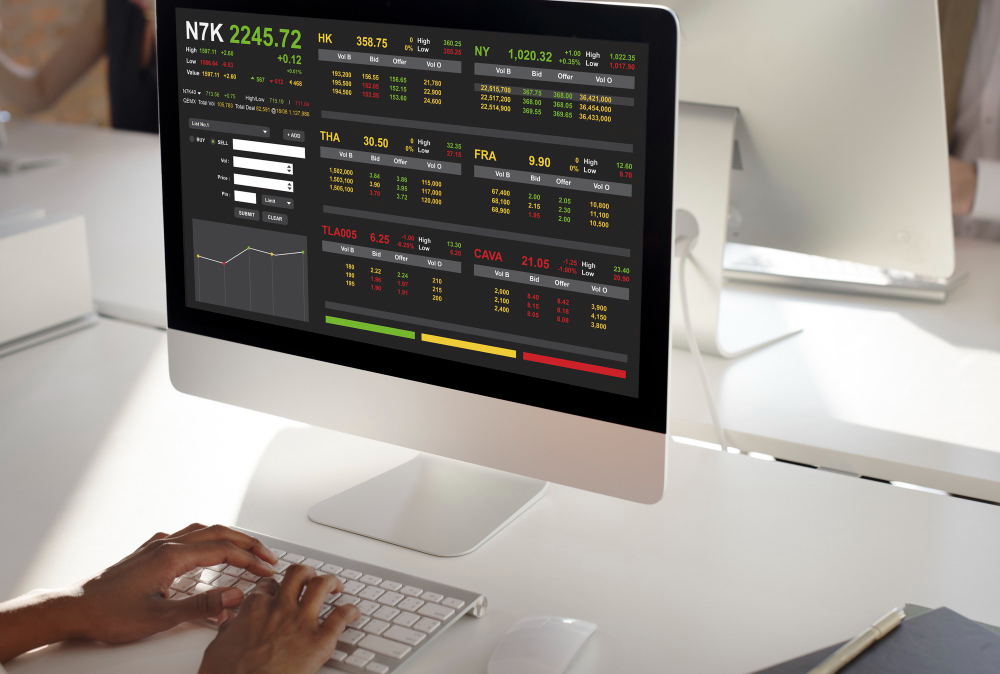Trading is a dynamic and exciting way to build wealth in the financial markets. It offers individuals the opportunity to make informed investment decisions, whether they’re looking to supplement their income or make a full-time career out of trading. In this comprehensive guide, we’ll introduce you to the world of trading, covering the basics, various asset classes, trading strategies, and essential tools to get started on your trading journey.
Education is the passport to the future, for tomorrow belongs to those who prepare for it today.
― Malcolm X
Table of Contents
- Understanding Trading
- Types of Trading
- Asset Classes
- Trading Strategies
- Risk Management
- Tools for Trading
- Getting Started
- Conclusion

1. Understanding Trading
What is Trading?
Trading is the act of buying and selling financial instruments, such as stocks, bonds, commodities, or currencies, in the hope of profiting from price fluctuations. Traders use various techniques, tools, and strategies to make informed decisions in the market.
2. Types of Trading
A. Day Trading
Day trading involves opening and closing positions within the same trading day. It’s a fast-paced approach that requires monitoring the markets closely.
B. Swing Trading
Swing traders hold positions for several days to weeks, aiming to profit from medium-term price movements.
C. Position Trading
Position traders take a long-term view, holding positions for months or even years, with a focus on fundamental analysis.
3. Asset Classes
Trading can involve various asset classes, including:
- Stocks
- Bonds
- Commodities
- Currencies (Forex)
- Cryptocurrencies
Each asset class has its unique characteristics and trading opportunities.
4. Trading Strategies
A. Technical Analysis
Technical analysis involves studying historical price charts and using indicators to make trading decisions.

B. Fundamental Analysis
Fundamental analysis focuses on assessing the financial health of a company or the economic conditions of a country to make trading decisions.

5. Risk Management
Risk management is crucial for successful trading. We’ll cover topics like setting stop-loss orders, position sizing, and risk-reward ratios to help protect your capital.
6. Tools for Trading
A. Trading Platforms
Explore popular trading platforms like MetaTrader, Thinkorswim, and TradingView, and their features.

B. Technical Analysis Tools
Learn about popular technical analysis tools, including moving averages, RSI, MACD, and more.
7. Getting Started
We’ll guide you through the process of opening a trading account, selecting a broker, and making your first trade.
8. Conclusion
Trading can be a rewarding and potentially profitable endeavor when approached with knowledge, discipline, and a well-thought-out strategy. This guide serves as your introduction to the exciting world of trading. Stay tuned for more in-depth articles on specific trading strategies, techniques, and market analysis.
In this blog post, we’ve introduced the basics of trading, various types of trading, asset classes, trading strategies, risk management, and essential tools. Now, you’re well-equipped to start your trading journey. Remember, trading involves risk, and it’s essential to continue learning and practicing to achieve success in the financial markets. Good luck on your trading adventure!
Please note that trading involves risk, and it’s crucial to do your research and practice in a demo account before committing real capital. Additionally, consult with a financial advisor or professional before making trading decisions.
Disclaimer: The information in this blog post is for informational purposes only and should not be considered as financial or investment advice. Always do your research and consult with a financial advisor before making any trading decisions


